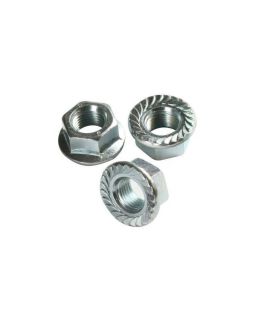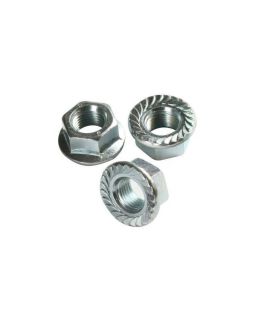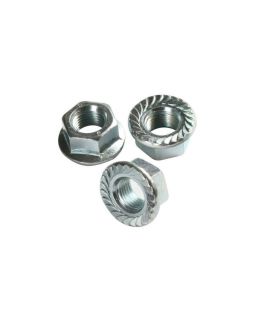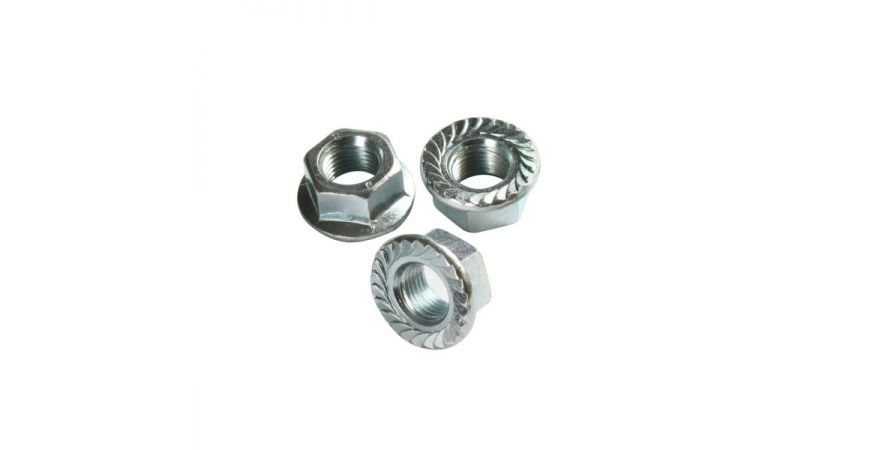
What is DIN 6923?
DIN 6923 Specifications for hexagon nuts with a serrated flange - Click Here To See Our Range
DIN stands for "Deutsches Institut für Normung", meaning "German institute for standardisation" and is widely accepted globally, though many are not superseded by ISO standards.
A flange nut has a wide flange at one end that acts as an integrated washer which distributes the pressure of the nut over the part being secured. This helps to reduce the chance of damage to the part and making it less likely to loosen as a result of an uneven fastening surface. With the DIN 6923 specification, the flange is serrated to provide a locking action. The serrations are angled to keep the nut from rotating in the direction that would loosen the nut. They should not be used with additional washers. The serrations help to prevent the vibration of the nut from moving the fastener and working loose.
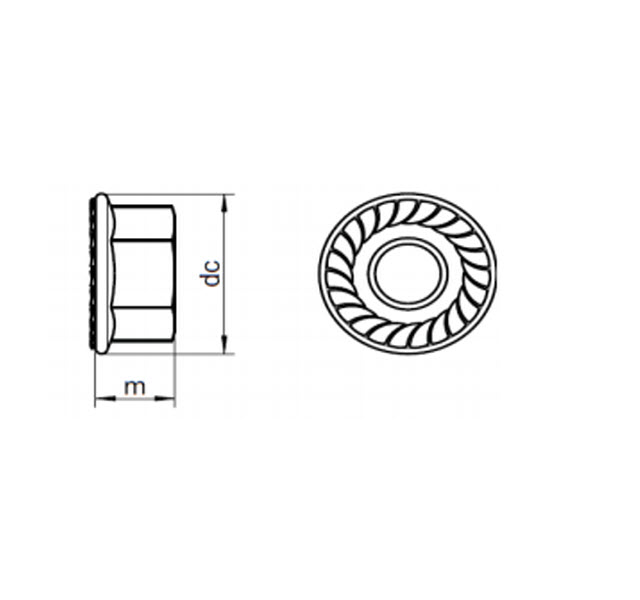
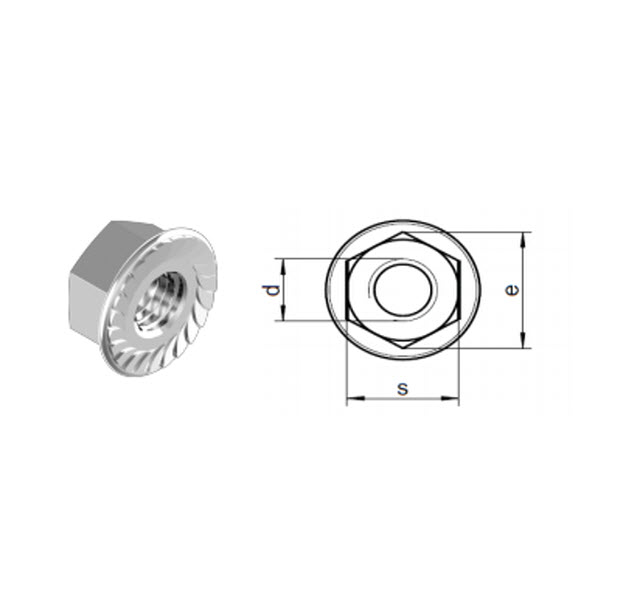
All measurements in millimetres (mm) and given as guidance only
|
d |
dc |
m |
s |
e |
|
M3 |
7.50-8.00 |
3.55-4.00 |
5.30-5.50 |
5.99 min. |
|
M4 |
10 |
4.65 |
7 |
7.66 |
|
M5 |
11.8 |
4.7 |
8 |
8.79 |
|
M6 |
14.2 |
5.7 |
10 |
11.05 |
|
M8 |
17.9 |
7.64 |
13 |
14.38 |
|
M10 |
21.8 |
9.64 |
15 |
17.77 |
|
M12 |
26 |
11.57 |
18 |
20.03 |
|
M16 |
34.5 |
15.3 |
24 |
26.75 |

